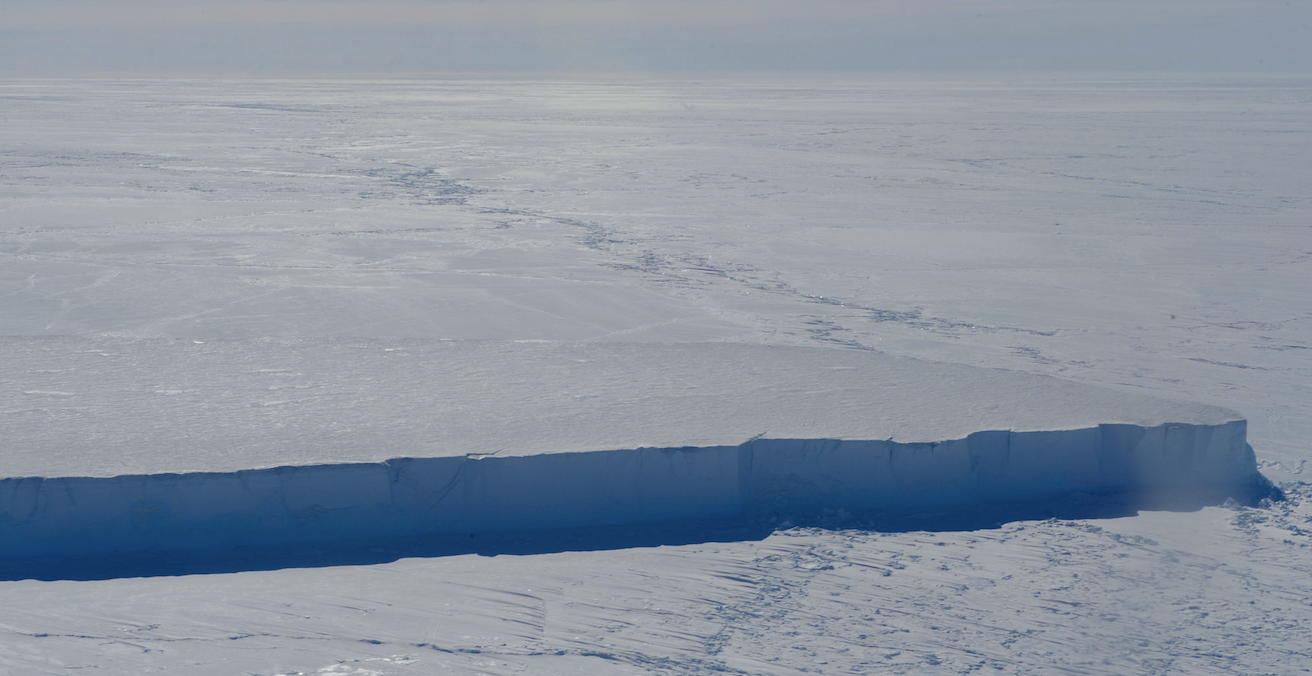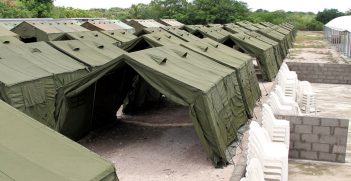Australia-China Relations in the Frozen South

The Antarctic Treaty System has provided a sound legal framework to promote scientific investigation, environmental protection and the peaceful use of the Antarctic. But if it is to remain strong and adaptable in providing governance for the region, it is important that all states, including China, clearly articulate their interests.
Australia and China have a long history of cooperation on scientific research in Antarctica. During the early 1980s, the Australian Antarctic research program hosted the first Chinese scientists to visit Antarctica. The current leader of the Chinese National Antarctic Research Expedition was one of the scientists on these Australian hosted expeditions. This long history of Antarctic cooperation between Australia and China can provide a solid footing for future relations.
From these recent beginnings, China has emerged as an important country in the Antarctic Treaty System (ATS) and the field of Antarctic scientific research. China joined the ATS in 1983, became a Consultative Party in 1985 and in 1998 joined the Madrid Protocol on Environmental Protection. In 2007, China became a party to the Convention on the Conservation of Antarctic Marine Living Resources (CCAMLR) and is a key participant at the annual Commission meetings held in Hobart. Chinese investment in Antarctic science has also grown significantly, with currently four permanent research stations and a fifth under construction. At the recent 2017 Antarctic Treaty Consultative Meeting (ATCM) held in Beijing, China reiterated its support for the ATS.
It is important to note that increasing Chinese activity in Antarctica has recently attracted some significant academic and media commentary in Australia. Anne-Marie Brady’s 2017 book China as a Great Polar Power, Clive Hamilton’s 2018 book Silent Invasion and media comments by the Tasmanian Green Party, have raised concerns about China’s current and expected future activities in Antarctica. Particularly, what they might mean for the Antarctic environment, marine resource use and the current prohibition on mineral resource activities under the Madrid Protocol.
While headline grabbing, such statements fundamentally mischaracterise the content of the 1959 Antarctic Treaty and the respective positions of Australia and China under that agreement. To be clear, Australia is an original signatory to the 1959 Antarctic Treaty and became legally bound to it when it came into force in 1961. China joined and became bound by the Antarctic Treaty only in 1983. As an original signatory, Australia automatically became a consultative party to the Antarctic Treaty in 1961, while China only became a consultative party in 1985.
Importantly, regarding sovereignty claims, Article 4(2) of the Antarctic Treaty, provides that:
No acts or activities taking place while the present Treaty is in force shall constitute a basis for asserting, supporting or denying a claim to territorial sovereignty in Antarctica or create any rights of sovereignty in Antarctica. No new claim, or enlargement of an existing claim to territorial sovereignty in Antarctica shall be asserted while the present Treaty is in force.
This means that for all countries within the 1959 Antarctic Treaty, including China and Australia, any activities occurring after the treaty came into force in 1961 will neither strengthen or weaken existing claims to sovereignty. Nor can activities after 1961 create any rights of sovereignty in Antarctica.
As at 1961, the seven original claimant states (including Australia) had made claims based on discovery and occupation of Antarctic territory. The United States and Soviet Union had also been involved in exploration and research activity prior to 1961, so asserted a “basis of a claim,” without ever formally making one. However, China had not been involved in Antarctic exploration and research activity prior to the Antarctic Treaty coming into force in 1961. As discussed above, China only started scientific work in the early 1980s.
Australia and China are therefore in very different positions under the Antarctic Treaty. Australia is a party to the Antarctic Treaty and has made an extensive territorial claim to 42 percent of the Antarctic continent. This claim has by agreement been placed on hold, under Article 4(2) of the Antarctic Treaty, but never abandoned. China is a party to the Antarctic Treaty, with a significant and rising presence in terms of quantity of research bases and research activities. However, as these activities have been carried out whilst the Antarctic Treaty is in force, they provide no basis in international law for China asserting any claim to sovereignty over Antarctic territory.
The Antarctic Treaty System is one of the success stories of the international legal system, particularly regarding the core values of peaceful use, scientific investigation and environmental protection. Over its near 60-year history, the 1959 Antarctic Treaty has been very successful in ensuring that Antarctica and the Southern Ocean have remained free from conflict. In this sense, the Antarctic governance regime that developed from the treaty has been effective in a “problem-solving” sense – it has avoided the main problem (i.e. security competition) that led to its formation and has also evolved through internal debates and addressing external challenges.
For Australia, Antarctica remains – in the words of Richard Casey (Minister for External Affairs during the negotiation of the 1959 Antarctic Treaty) – “of close and immediate concern.” Australia’s national interests in Antarctica have been on the public record for some time but were recently re-articulated in the Australian 2016 Antarctic 20 Year Strategy and Action Plan. This document describes Australia’s interests as follows:
- maintain Antarctica’s freedom from strategic and/or political confrontation
- preserve our sovereignty over the Australian Antarctic Territory, including our sovereign rights over adjacent offshore areas
- support a strong and effective Antarctic Treaty system
- conduct world-class scientific research consistent with national priorities
- protect the Antarctic environment, having regard to its special qualities and effects on our region
- be informed about and able to influence developments in a region geographically proximate to Australia
- foster economic opportunities arising from Antarctica and the Southern Ocean, consistent with our Antarctic Treaty system obligations, including the ban on mining and oil drilling.
Australian Antarctic interests support peace, science and environmental protection – the fundamental values of the ATS, as encapsulated in Article 2 of the Madrid Protocol. These Australian interests are well served by a strong and adaptable ATS, which acknowledges the seven original territorial claims, but puts on hold any disputes over sovereignty.
Australia’s interests support strong and committed dialogue on Antarctic science and policy with all Antarctic Treaty parties. China’s national policy (and hence national interests) on Antarctica may not be as fully formed as its policies regarding the Arctic region. However, China’s 2017 Antarctic Whitepaper released at the 2017 ATCM, titled “China’s Antarctic Activities”, provides some insights into current thinking on its interests in Antarctica and the Southern Ocean. The content of the 2017 Antarctic Whitepaper, therefore, deserves close consideration.
Two aspects of the 2017 Whitepaper would benefit from further information. First, the 2017 Whitepaper suggests that China is committed to the “sustainable development of Antarctica.” As China further articulates its interests in Antarctica, it would be beneficial to hear more on what these references to sustainable development suggest about future weighting that might be provided between environmental protection, economic development and social development in Antarctica and the Southern Ocean. Second, it would be beneficial to hear more on the willingness of China to provide “more effective public products and services for international governance of Antarctica to move towards a more equitable and reasonable orientation to structure the Antarctic Community of Human Destiny.” This statement raises several important questions, for example: Does this suggest that the ATS is currently failing to achieve an equitable and reasonable orientation? If so, in which ways? What would need to change within the ATS to move towards a more equitable and reasonable orientation? What is meant by the expression “the Antarctic Community of Human Destiny”?
To conclude, for the ATS to remain adaptable and strong in providing governance of the region it is important for all states, including China, to clearly articulate their interests to other countries. This approach will provide the best prospects for ATS states to work cooperatively to see if such interests are consistent with, and hence accommodated, within the fundamental values of science, peace and environmental protection of the ATS.
Dr Jeffrey McGee, Faculty of Law and Institute for Marine and Antarctic Studies, University of Tasmania, Australia.
Professor Marcus Haward, Institute for Marine and Antarctic Studies, University of Tasmania, Australia.
This piece is adapted from a presentation “’Australia, China, Bi-focalism and the Antarctic Treaty System” which was presented at the “Exploring Australia’s China Strategy in Antarctic Governance” Workshop, Adelaide, 7 November 2018, as funded by the AIIA Workshop Support Grant. Together with Dr Nengye Liu, Dr McGee is co-editing a forthcoming special issue of the Australian Journal of Maritime and Ocean Affairs titled ‘Navigating Twenty-First Century Challenges to the Antarctic Treaty System’, which will be published during May 2019.
This article is published under a Creative Commons License and may be republished with attribution.





